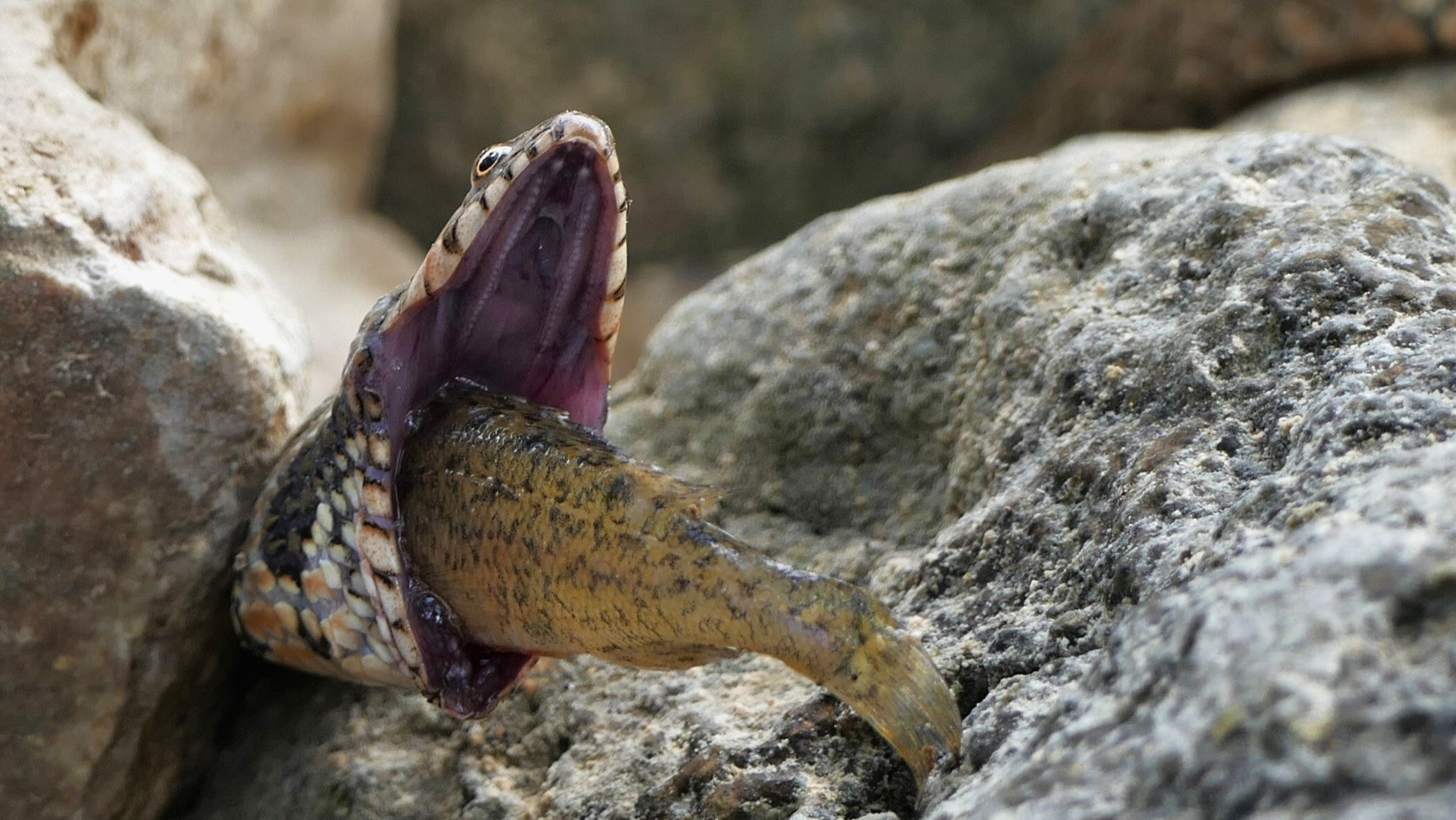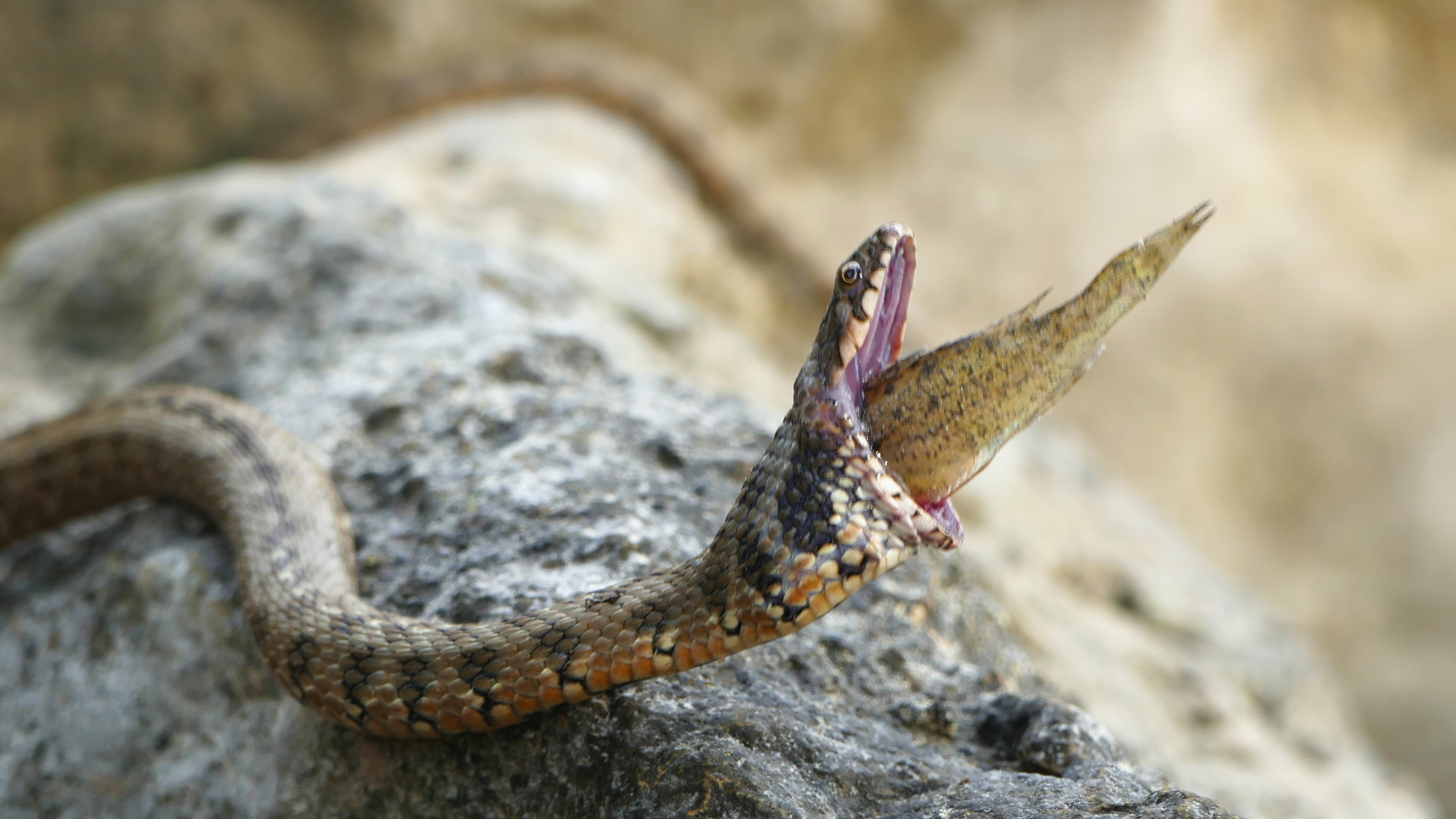Snake choking on invasive fish the size of its head saved by scientist
A snake in France had a lucky escape after attempting to eat a fish with a spiny dorsal fin that had gotten lodged into the reptile's esophagus.

A herpetologist in France has captured a remarkable photo of a snake choking as it attempted to eat a fish the size of its own head.
While many snake species eat fish — and many can open their jaws wide enough to gulp down large prey — the fish species in this case was invasive in this part of Europe. The scientist who spotted it says that the encounter should prompt more research into the relationship between fish-eating snakes and invasive species.
Nicolas Fuento, a herpetologist at the nonprofit League for the Protection of Birds in France, encountered the viperine snake (Natrix maura) at Lac de Carcès in southeastern France. At first he thought the snake was simply trying to eat the fish. But then he realized the snake was struggling.
"The snake showed unusual spasmodic movements in an apparent attempt to expel the fish, which appeared to be lodged in the snake's [esophagus]," he and a colleague wrote in a research note describing the incident, published Sept. 10 in the journal Herpetology Notes.
Fuento got an intern to hold the snake while he tried to remove the fish, but the fish's spines along its back were stuck in the snake's esophagus. So to get it out, he gently pushed the fish into the snake's mouth to dislodge the spines, "as if I were removing a hook from a fish's mouth," he told Live Science in an email.

Once relieved of the fish, the snake did not appear to be injured and slithered away under a rock, he said.
Sign up for the Live Science daily newsletter now
Get the world’s most fascinating discoveries delivered straight to your inbox.
With the fish out of the snake's mouth, Fuento identified it as a ruffe (Gymnocephalus cernua). Ruffes are small freshwater fish native to parts of Europe and Asia, but the species has been introduced to North America and other parts of Europe, including France — and their tough and spiny dorsal fins could make them difficult for some predators to swallow.
Viperine snakes spend most of their time in and around water, eating mostly fish, and their native range overlaps with ruffes in some regions, according to the paper. But the paper also noted that ruffes are an invasive species in Mediterranean wetlands, where viperine snakes are rare and declining.
That decline has been caused by several threats, including river pollution, wetland destruction and urbanization, Fuento told Live Science. His paper noted that the ruffe's introduction could be another potential threat to the local snake population — although the actual impact of the invasive fish on the snakes has not been studied.
The paper points to other instances where fish-eating snakes in Europe, including viperine snakes, have died after eating invasive fish such as largemouth bass (Micropterus salmoides), brown bullheads (Ameiurus nebulosus) and common sunfish (Lepomis gibbosus).
But snakes can also die after mishaps while eating native fish too, the paper noted, and some snakes seem to have the ability to avoid "harmful alien fishes."
"The goal of this article is to quote a new case of mortality by exotic fish," Fuento said. "And we hope that may lead to further research."

Ethan Freedman is a science and nature journalist based in New York City, reporting on climate, ecology, the future and the built environment. He went to Tufts University, where he majored in biology and environmental studies, and has a master's degree in science journalism from New York University.










